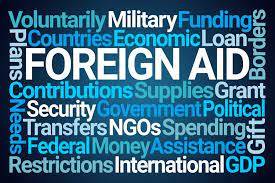
Historically, foreign aid has primarily surged through bilateral or multilateral channels, often bypassing local organizations and communities. While these funds have undoubtedly contributed to saving lives and advancing progress in various sectors, they have faced serious criticism for their limited impact on the ground and potential to create dependency.
Local organizations, including community-based groups, non-governmental organizations (NGOs), and grassroots initiatives, often struggle to access funding from traditional sources like international donors and foundations due to their complex bureaucratic requirements. This challenge arises primarily from a lack of capacity and resources to compete against larger international organizations for funds.
To effectively manage funds and programs, these local organizations may require technical capacity building in areas such as writing quality proposals, financial management, project monitoring, and reporting.
The question of how many international donors have invested in building local capacities becomes pertinent. Unfortunately, international donors are often risk-averse and tend to avoid funding smaller, less-established organizations, thereby hindering the growth and impact of local initiatives.
However, after several decades of foreign aid to many developing countries in Asia and Africa, a growing recognition is emerging among the international community that this top-down approach is often inefficient, unsustainable, and can perpetuate dependency. In response to these concerns, a paradigm shift is underway in the world of aid financing, with a renewed focus on locally led organizations and their ability to fund their future interventions.
Globally, a trend is emerging where local organizations are taking a more active role in financing humanitarian and development initiatives. International donors, policymakers, and development practitioners have come to recognize the importance of local ownership and leadership in achieving meaningful and sustainable development outcomes. There are quite a few successful examples where locally led organizations have been able to raise multi-year funding to finance their initiatives.
For instance, in Pakistan, a locally led hub of international, national and local Start Network members, known as the READY Pakistan raised EUR 1.2 million from the German government in anticipation of devastating floods in Balochistan and Sindh in Summer 2022. In Bangladesh, a community-based organization secured funds from a local bank to support local fishermen during a ban on fishing in their communities. In India, an organization obtained multi-year funding from Google to develop and improve the financial system. NGOs are exploring numerous fundraising concepts that resonate with their vision and engage potential donors to support their initiatives.
Above mentioned local NGOs’ funding raising ideas, although in different geographical contexts, share common traits. Firstly, they possess recognized expertise; secondly, they are dedicated and have proven to be responsible financial managers; and thirdly, they have a substantial social capital – they are connected to several professional networks and peer groups that give international donors confidence in working with them.
These examples provide evidence that local organizations are rising and are uniquely positioned to address the specific needs and priorities of their communities. This shift towards localization has been further reinforced by global frameworks like the Sustainable Development Goals (SDGs) and the Grand Bargain, which call for greater support for local actors in humanitarian and development contexts.
Certainly, localization comes with its own set of challenges, including concerns about corruption, misallocation of resources, and the empowerment of a few individuals.
However, in the long run, there is a good possibility that the innovative strategies employed by these local organizations to secure funding will help build a more sustainable future for their communities.
It is also essential to recognize that the effectiveness of aid varies significantly depending on factors such as governance, local capacity, and donor policies. A shift towards principles of local ownership, sustainability, transparency, and accountability, along with a focus on long-term development goals, can help address the challenges that have hindered the impact of foreign aid.
Additionally, coordination among donors, targeted technical capacity building, and a clear understanding of recipient countries' unique contexts are vital for maximizing the positive impact of aid financing. Aid financing is crucial and can play a constructive role, but it requires careful consideration, adaptability, and a commitment to addressing the root causes of humanitarian crisis, poverty and under development.

